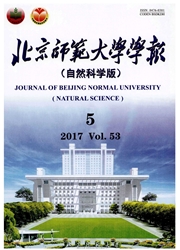

 中文摘要:
中文摘要:
通过将一维驱动耗散非线性漂移波方程的解分成定态波和扰动波两部分,并对傅里叶变换后各模式的扰动波自能及其与定态波的相互作用能进行数值计算,我们发现,利用外加周期力成功控制漂移波湍流时,主模式在鞍形波势阱中的对称性质恢复到激变前层流时的状态.在激变前的层流态,振子的运动集中于负能态;激变引起了主模式对称性的突变,激变后的湍流态,振子的运动以正能态为主;而在强湍被成功控制后的层流态,主模式的对称性又一次发生了突变,振子运动又恢复到负能态.这种统计意义上的运动对称性的变化是强湍得以控制的内在原因.
 英文摘要:
英文摘要:
In the driving wave coordinate, one-dimensional driven-dissipated drift-wave system can be transformed to a set of coupled oscillators (so-called perturbation wave (PW)) moving in a steady wave (SW) potential well. By calculating their self energy and interaction energy, it is found that motion symmetry of master mode is the same as the laminar state before crisis when strong turbulence is suppressed by external periodic force. In laminar state before crisis, motion is dominated by negative interaction energy. After crisis, mutation of symmetry takes place. That is, in turbulent state, motion is dominated by positive interaction energy. When turbulence is controlled to conform to the laminar state, mutation of symmetry takes place again. Motion is dominated by negative interaction energy once more. It is change of motion symmetry that leads to turbulence suppression.
 同期刊论文项目
同期刊论文项目
 同项目期刊论文
同项目期刊论文
 期刊信息
期刊信息
